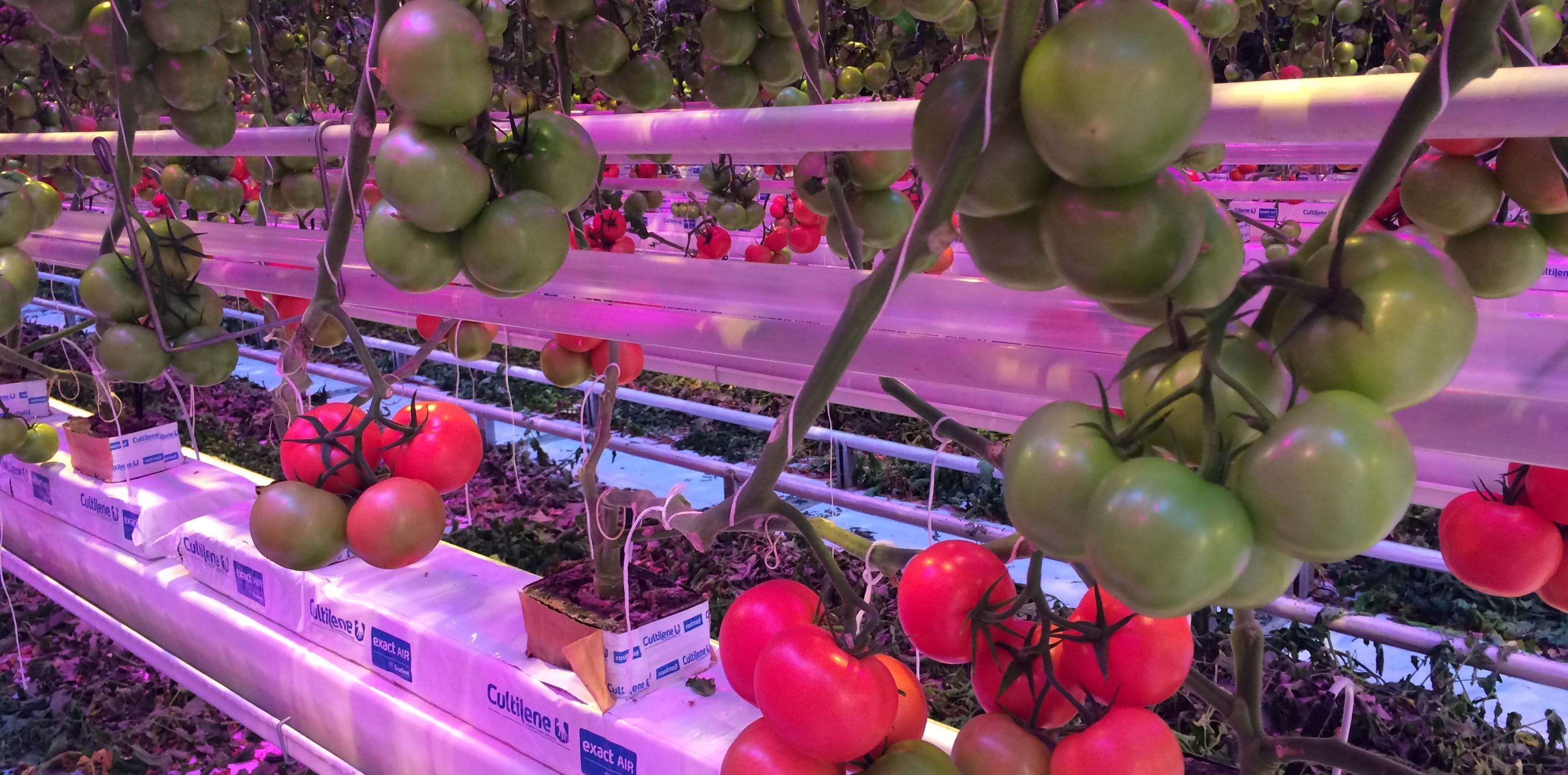First harvest hybrid Tomato exposure test
September this year new tomatoes have been planted for the project Hybrid Tomato Lighting at Delphy Improvement Centre. In this project, coarse vine tomatoes are grown under a combination of LED and SONT lighting. This week the first tomatoes were harvested. The main variety is Merlice van De Ruiter. This is no coincidence, because Merlice is one of the strongest and most productive varieties under lights.

Objectives
The projects at Delphy Improvement Centre collect information about how De Ruiter varieties react in future-proof growing conditions. De Ruiter and Delphy Improvement Centre have been working closely together for years, from the beginning in 2005. Over the past 13 years, several varieties have been tested in partnership, such as Ever, Komeett, Timotion and DRC7028. After SONT, an intermediate step towards hybrid lighting was followed by 5 years of 100% LED lighting. This cultivation system was tested for both the coarse bunch (Komeett and Merlice), and for a variety from the taste segment (Juanita). In addition to the main variety, a number of trial fields are always planted with other varieties/new numbers to gain knowledge about breeding varieties.
In the Hybrid Lighting project, the partners strive for maximum (winter) production with Merlice. They aim for a total production of 107 kg/m2 years. The department is equipped with 235 µmol/m2/s lighting (90 µmol/m2/s SON-t + 90 µmol/m2/s TopLED + 55 µmol/m2/s interlight). The starting point for the exposure was the necessary connection for a 180 umol SonT installation, namely 106 W/m². By replacing 50% of the SonT lamps by LED lighting, the light level can be increased by up to 40%. In order to strive for maximum winter production, we started with a 3-piece plant and 3.3 stems/m2. Last week (week 46) the first fruits were harvested, as planned.
Cultivation process
The start of cultivation, with a planting date in week 37, was good. The first bunch was barely in bloom at the start. The 3 stems on the plant showed nice uniform. From one week after planting, the exposure hours are slowly built up and from week 44, the exposure is set at 18 hours a day. Every Thursday the test is visited by the participants and three growers to determine the right direction. 3 weeks ago it was questionable whether the first fruits would achieve the desired fruit weight, but the average fruit weight of the first bunches at the time of harvesting is 160 grams. Because the complete 3.3 stems can be harvested directly, a difference is made immediately in these first weeks of cultivation. The 3.3 stems/m2 must produce more than 2 kg/m2/week during the winter period in order to achieve the intended production. Next week the aim is to increase the stem density to 4 stems/m2, which with a total exposure level of 235 µmol/m2/s should ensure maximum winter production with good quality.
The project is a collaboration between Signify (formerly Philips Lighting), De Ruiter (Bayer), Saint-Gobain Cultilène, Gremon systems and Delphy. During cultivation, the partners organise several open days for growers to show the development of the crop and to further explain the cultivation system. A visit can also be made to the De Ruiter Experience Center, where the exposed crop was planted on 18 October 2018.